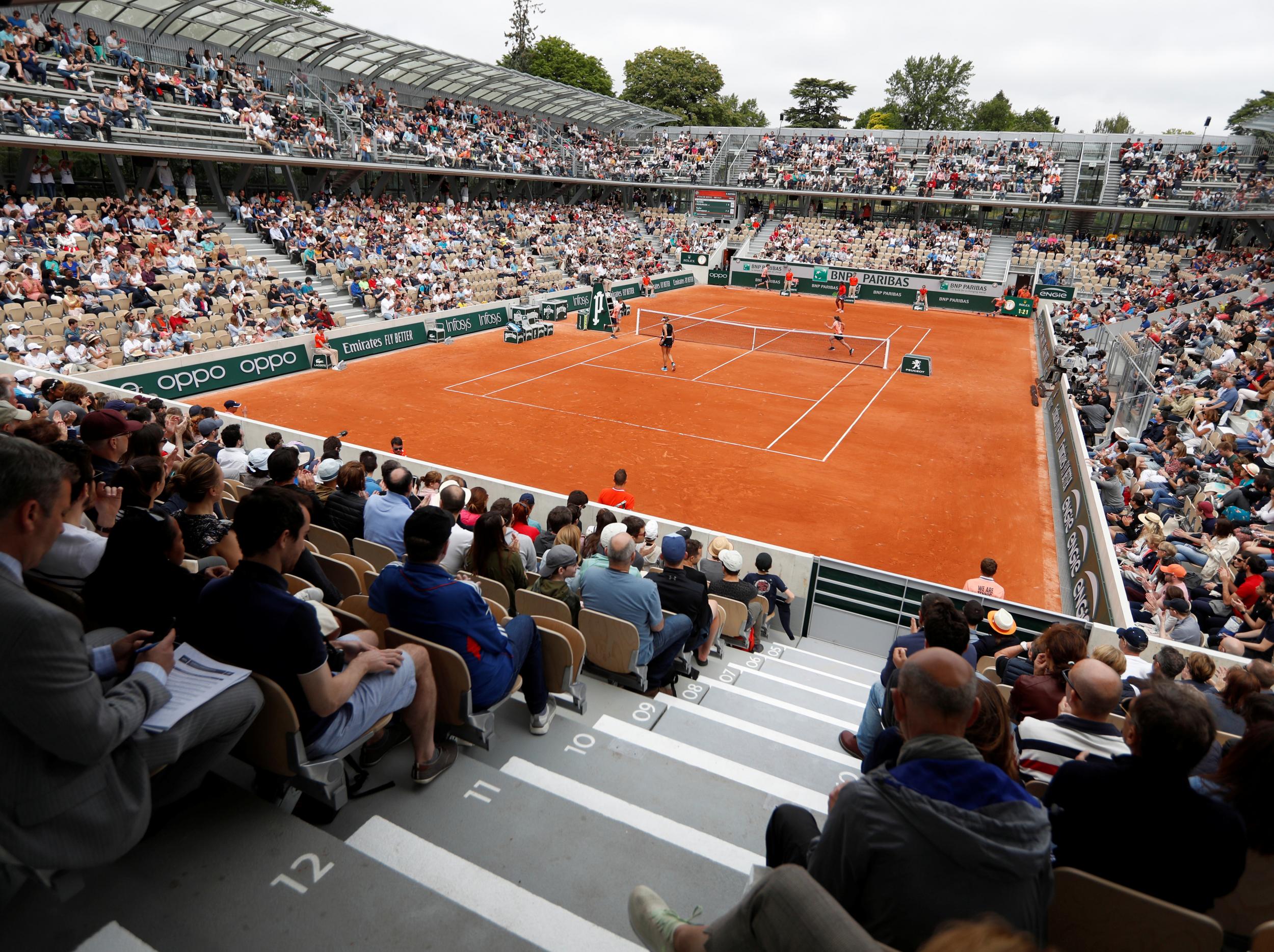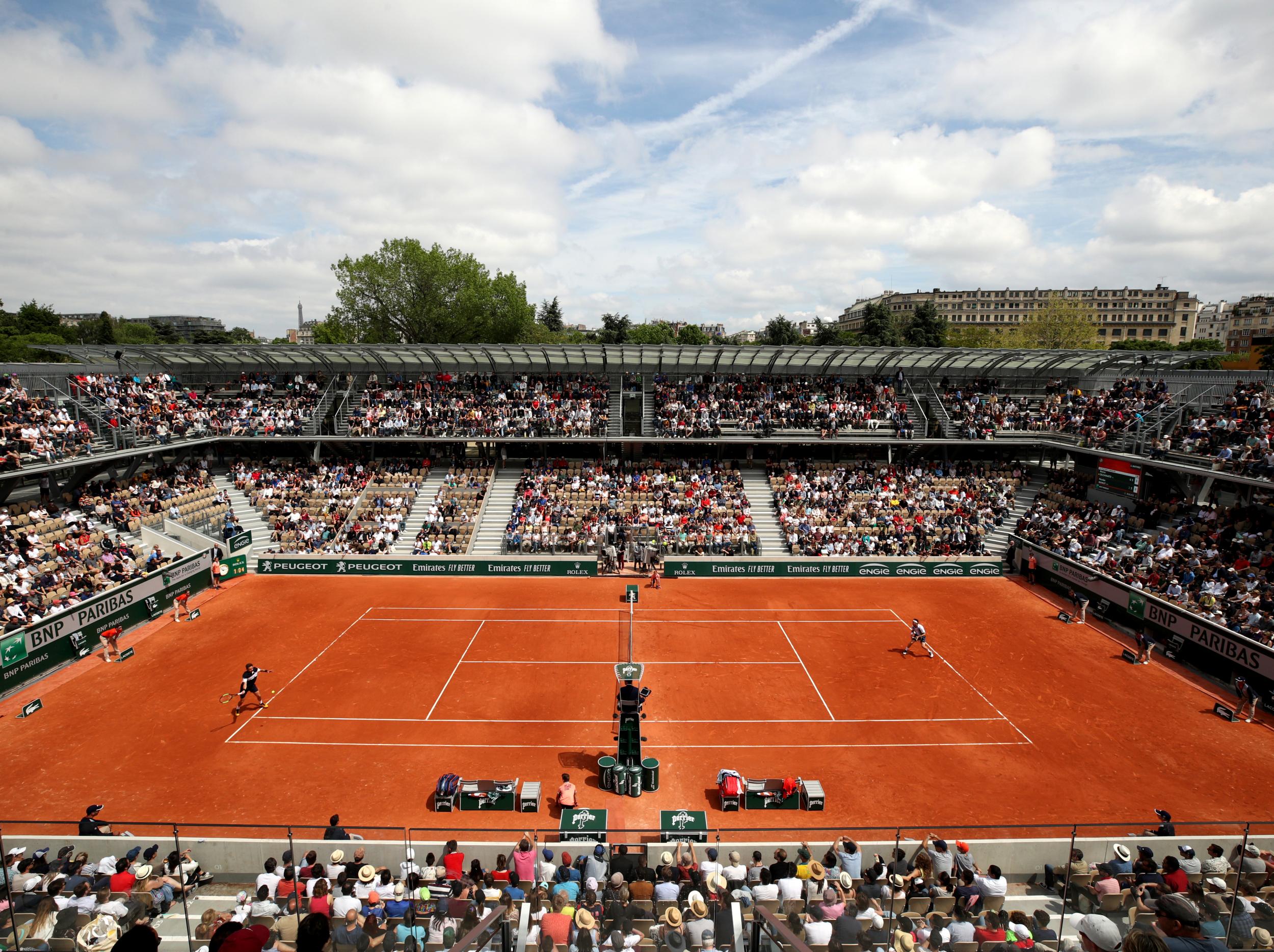French Open 2019: Court Simonne-Mathieu stunning new addition to revitalised Roland Garros
The tournament’s new Court Simonne-Mathieu, which is the most imaginative aspect of a remarkable rebuilding programme undertaken by the French Tennis Federation, came at a cost of 360m euros

If you walk towards Roland Garros from Porte Molitor you could be forgiven for thinking that the new glass structures you see to your right are simply new greenhouses in the Jardin des Serres d’Auteuil, the historic botanical gardens that adjoin the home of the French Open.
Listen carefully, however, and for the next two weeks you will hear the thud-thud of tennis balls being struck and intermittent applause. The four new greenhouses are an integral part of the tournament’s new Court Simonne-Mathieu, which is the most imaginative aspect of a remarkable rebuilding programme undertaken by the French Tennis Federation at a cost of 360m euros (about £317m), 99 per cent of which is self-funded.
In almost every corner of Roland Garros there are new buildings and new courts. Ninety per cent of the old Court Philippe-Chatrier, which is the main stadium here, was knocked down after last year’s tournament and has been replaced by gleaming new stands soaring into the Paris sky. By next year the stadium will also have a retractable roof.
For years the French Open was the poor relation of the four Grand Slam tournaments, its ambitions to expand beyond its cramped confines frustrated by opposition from environmentalists wanting to protect both the Serres d’Auteuil and the Bois de Boulogne. At one stage the French federation even threatened to move the tournament from its historic home to a larger site at Versailles.
Whether or not that threat played any part in what transpired, the federation committed in 2011 to staying in Paris and then staved off a number of legal challenges from environmentalists. The site as a whole is greener than it used to be. Although a number of trees have been felled as part of the building work, the federation is committed to planting more trees than it fells.
The beautiful Court Simonne-Mathieu, which is now the third of the main show courts here, pays spectacular respect to the site’s environmental credentials. The four greenhouses which surround the sunken court contain collections of rare plants from the tropical areas in the Americas, Africa, Asia and Oceania. Outside of the tournament, visitors will be able to walk through each of them as part of a visit to the Serres d’Auteuil.
With a capacity of 5,290, the court is named after a two-times champion of Roland Garros (in 1938 and 1939) who became just as famous for her work with the French Resistance during the Second World War as for her achievements on the court. Mathieu was in the United States when Germany invaded France in 1940, upon which she returned to Europe to join General De Gaulle in London. She persuaded him to form a women’s section of the Free French forces and four years later marched down the Champs Elysees with him when Paris was liberated.
Garbine Muguruza, the 2016 champion, played the very first match on the new court on Sunday, beating Taylor Townsend 5-7, 6-2, 6-2. “It’s a very cute and cosy court,” Muguruza said afterwards. “It's like you’re in a garden. It's a different feeling.”
The Court Simonne-Mathieu sits within the Jardin des Serres d’Auteuil, as does the Orangerie, a beautifully renovated stone building which is converted into a restaurant area during the tournament. The imaginative project sees the tennis site as a whole expand from 9.6 hectares to 11.16 hectares for the duration of the tournament.
The other major change here this year is the rebuilt Court Philippe-Chatrier, which is the main show court. Work on knocking down the old stands began immediately after last year’s tournament. The stands are eight metres higher than they were in the old stadium and the whole structure will be another three metres higher once the new sliding roof is installed in time for next year’s tournament, when the French Open will lose its tag as the only Grand Slam event without a retractable cover.
While the rebuilt stadium feels very modern, photographers will be particularly glad that the ground-level pits at one end, which enable them to take the iconic pictures which have become part of the event’s public perception, have been retained. There are 14,962 seats for spectators, all of them padded.

A splendid new corporate hospitality area, the Village, was opened last year and in the last 12 months the western end of the site has been transformed. It includes four new competition courts with tiered seating, including a sunken Court 14, and two practice courts. The public walkways and viewing areas are much improved.
The whole site exudes style and sophistication. There are plenty of modern touches, such as a number of smartphone recharging points around the grounds, and some welcome additional comforts for spectators. There are more food and drink outlets, many of them under cover, and at various points around the site there are rows of beach-style deckchairs.
The pace of change will resume immediately after the end of the current tournament. Two more outside courts will be built, while the old Court No 1, affectionately known as the Bull Ring because of its circular design, will be knocked down to allow for an expansion to the Place des Mousquetaires, where spectators will be able to relax on a landscaped lawn area and watch matches on a giant screen.
Guy Forget, the tournament director, believes that the changes have enabled Roland Garros to shed what he agreed was its outdated image, while the reaction of the players has been very favourable. Roger Federer, who won his first match at the tournament for four years when he beat Italy’s Lorenzo Sonego, said: “I feel still it's the old Roland Garros. It has kept its flair and everything.”
Join our commenting forum
Join thought-provoking conversations, follow other Independent readers and see their replies
Comments